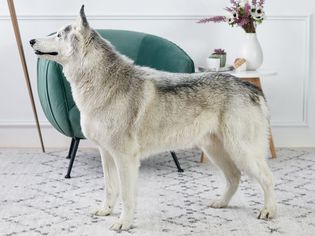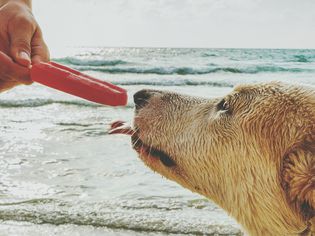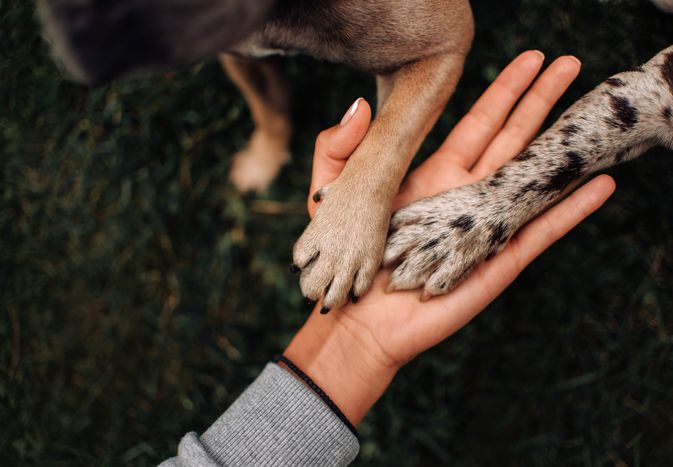The silky terrier is a small toy dog breed from Australia with a long, shiny coat from which the breed gets its name. The breed's silky hair is parted down the back and hangs straight. The low-shedding coat can be kept long and luxurious or clipped short for easier maintenance. Silky terriers have wedge-shaped heads and upright, V-shaped ears that help to give them alert expressions, and they are genuinely bright and watchful dogs. Silkies are quick to bark at strangers or other perceived threats, yet they tend to be quite loving with their family.
Here's what you need to know about the beloved silky terrier dog breed.
Breed Overview
Group: Toy
Height: 9 to 10 inches
Weight: 10 pounds
Coat: Long, silky
Coat Color: Black and tan; blue and tan; blue, silver, and tan; gray and tan; silver and tan; or silver, black, and tan
Life Span: 13 to 15 years
Temperament: Active, alert, affectionate
Hypoallergenic: Yes
Origin: Australia
Characteristics of the Silky Terrier
Silky terriers tend to have spunky and playful personalities. They're alert to their surroundings and like to stay busy. High intelligence also helps to shape the silky temperament, though they sometimes can be stubborn when it comes to training.
| Affection Level | High |
| Friendliness | High |
| Kid-Friendly | Medium |
| Pet-Friendly | Medium |
| Exercise Needs | Medium |
| Playfulness | High |
| Energy Level | Medium |
| Trainability | Medium |
| Intelligence | High |
| Tendency to Bark | High |
| Amount of Shedding | Low |
History of the Silky Terrier
The silky terrier was first developed in the early 20th century when Australian breeders crossed Yorkshire terriers with Australian terriers to create the earliest versions of the breed. Other breeds that may have played a role in its makeup include the cairn terrier, Dandie Dinmont, and Skye terrier.
At first, there were conflicting breed standards throughout Australia, but those were merged by 1926. The breed also was initially known as the Sydney silky terrier before it became the Australian silky terrier in 1955.
The Australian National Kennel Council first recognized the breed in 1958, the year the council itself was formed. One of its first orders of business was to recommend a breed standard to the American Kennel Club. The AKC then recognized the breed in 1959, calling it the silky terrier.
Silky Terrier Care
Silky terriers need daily exercise and consistent training and socialization. Their grooming also can be a substantial time investment, depending on how long you keep their coat.

Jan Zabrodsky / Getty Images
Exercise
The silky terrier is an active but typically not hyper dog that requires daily exercise. Plan to spend at least an hour per day exercising your dog via walks, hikes, vigorous games of fetch, and more. In addition, silky terriers can enjoy and excel at a variety of dog sports, which will challenge them both mentally and physically.
Make sure to always keep your dog on a leash or in a securely fenced area for outdoor exercise. These little dogs don't tend to back down when confronted by larger dogs. And their prey drive can cause them to run off chasing squirrels and other small animals. They also are prone to digging and might escape under fences, so they always should be monitored in a yard.
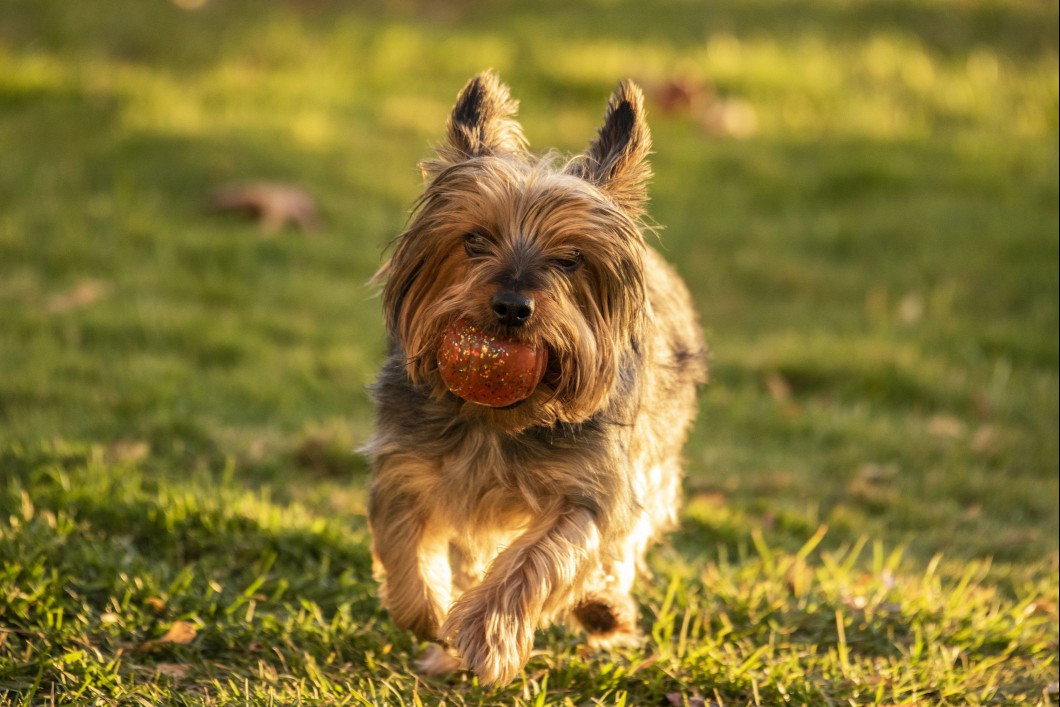
Grooming
The silky terrier’s coat is straight, shiny, and fine in texture. It grows continuously and is quite similar to human hair. A commitment to routine grooming is absolutely essential if you have this breed. Brush at least twice a week and up to daily, depending on how long the coat is. Use a pin brush, soft-bristle brush, or comb to work out tangles and prevent mats.
Plan on a bath, along with a coat trim, roughly every four to six weeks. You might want to use a canine conditioner or grooming spray to help keep the coat tangle-free. Also, check your dog’s nails at that time to see whether they need a trim. Look in the ears at least weekly for wax buildup and irritation and aim to brush the teeth daily.
Training
Silky terriers are quite smart and can learn training cues quickly. However, they also can be stubborn about when they want to obey. Start training at a young age to prevent unwanted habits from forming. Always use positive reinforcement methods and be consistent in your commands; don’t let bad behavior slide.
Likewise, start socialization from a young age. Introduce your dog to different people and other dogs to boost their comfort in new situations and ward off potential problems of being territorial. Silky terriers are typically adaptive to different living situations, but they sometimes can be reserved around new people.
Many silky terriers don’t like being left alone for long periods. They might act out due to boredom or loneliness via problem behaviors, such as excessive chewing or barking. A professional dog trainer or behaviorist can give you tips on leaving your dog alone. But it’s still best that a silky terrier lives in a household with someone home for most of the day.
Similarly, excessive alert barking can become problematic, so you’ll likely have to work on training your dog on when it's appropriate to bark and how to be quiet on command.
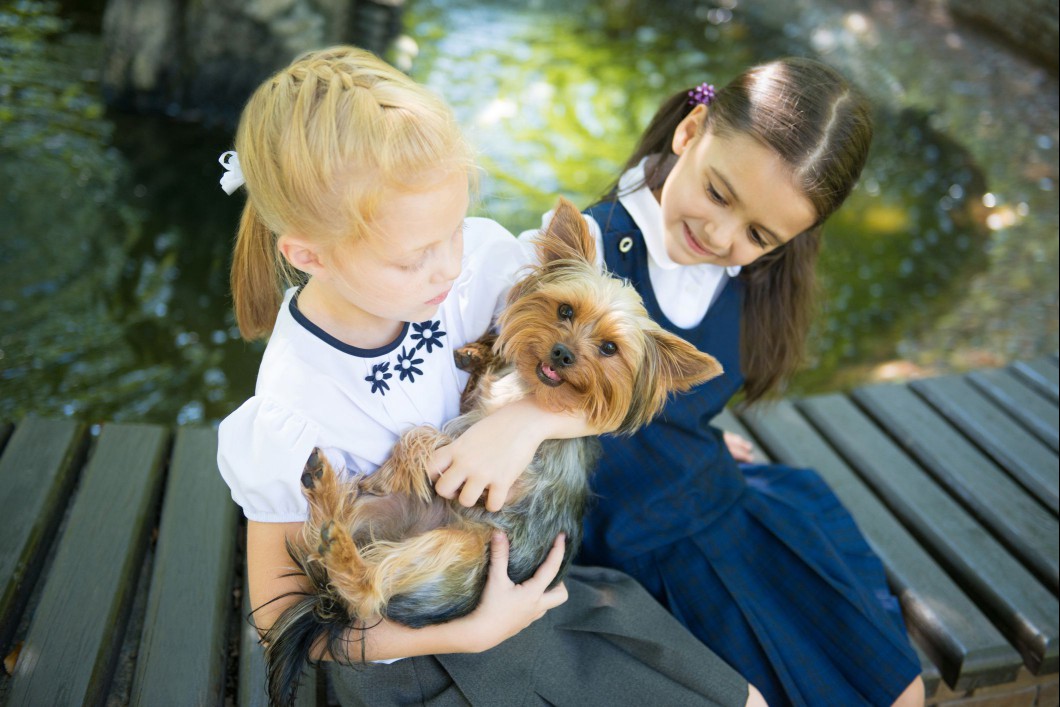
Common Health Problems
The silky terrier is overall a healthy breed, but it’s still prone to some hereditary health issues, including:
- Patellar luxation
- Eye problems
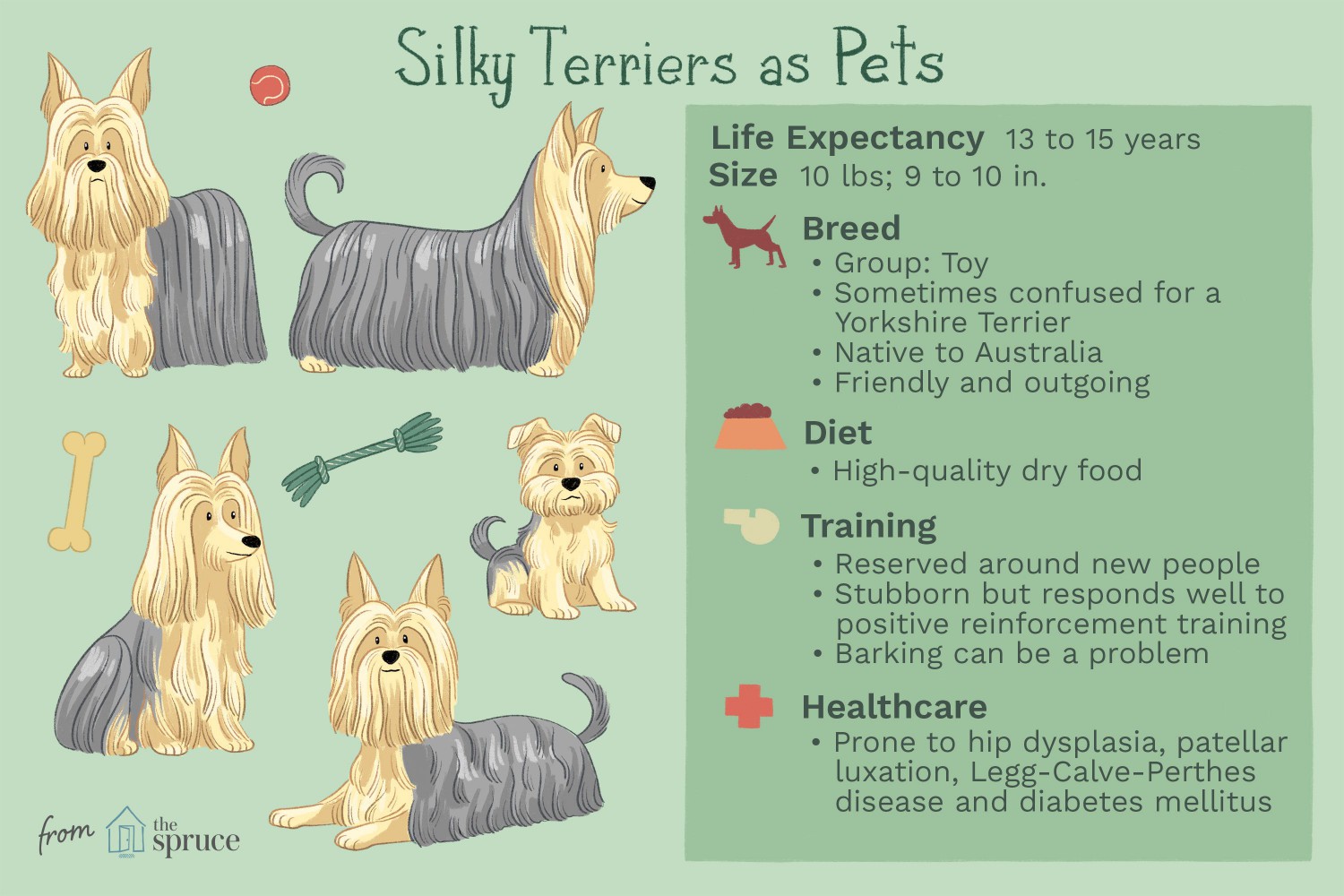
The Spruce / Kelly Miller
Diet and Nutrition
Make sure your dog always has access to fresh water and feed a high-quality canine diet with balanced nutrition. A diet specially made for small dog breeds, offered twice a day in measured meals, can be ideal. But you should always run both the type of food and the amount by your veterinarian to make sure you’re meeting your dog’s individual needs. Also, be mindful of treats and other extra food to ensure that your dog isn’t overeating, as even a little extra weight can be a lot on a small frame.
Where to Adopt or Buy a Silky Terrier
The silky terrier isn’t a very popular dog breed. However, it’s still possible to find one for adoption. Check local animal shelters and breed-specific rescue groups for a dog in need of a home. If you’re looking for a puppy from a reputable breeder, expect to pay around $800 to $3,500 on average.
For more information to help you find a silky terrier, check out:
- Silky Terrier Club of America
- Silky Terrier Rescue
Silky Terrier Overview
Affectionate and playful
Generally adaptable to different living situations
Can excel at dog sports
High grooming needs
Can be stubborn about training
Prone to digging
More Dog Breeds and Further Research
If you think the silky terrier is the right dog breed for you, be sure to do your research before getting one. Seek advice from veterinarians and other pet professionals. Also, talk to silky terrier owners, reputable breeders, and rescue groups to learn more.
If you’re interested in similar breeds, check out:
- Yorkshire terrier
- Australian terrier
- West Highland white terrier
There’s a whole world of potential dog breeds out there—with a little research, you can find the right one to bring home!
- What's the difference between silky terriers and Yorkshire terriers?
Silky and Yorkshire terriers look quite similar because they are closely related. Silky terriers tend to be slightly larger than Yorkies. Also, their heads are wedge-shaped while Yorkies' heads are rounded.
Are silky terriers good family dogs?Silky terriers are moderately good with children and would be best for a household with respectful older children. Some silkies might be too feisty and not gentle enough around young children.
Are silky terriers good apartment dogs?Silky terriers can do fine in an apartment if they get outside for sufficient exercise each day. However, they are prone to barking, which might disrupt nearby neighbors.




